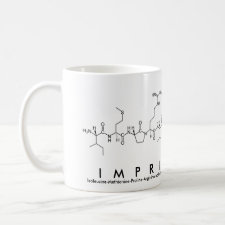
Authors: Rajkumar R, Katterle M, Warsinke A, Mohwald H, Scheller FW
Article Title: Thermometric MIP sensor for fructosyl valine.
Publication date: 2008
Journal: Biosensors and Bioelectronics
Volume: 23
Issue: (7)
Page numbers: 1195-1199.
DOI: 10.1016/j.bios.2007.09.015
Alternative URL: http://www.sciencedirect.com/science/article/B6TFC-4PT294B-4/2/6b97c99fa0f1421f916e5da145cd36c5
Abstract: Interactions of molecularly imprinted polymers containing phenyl boronic acid residues with fructosyl valine, fructose and pinacol, respectively are analysed in aqueous solution (pH 11.4) by using a flow calorimeter. The reversible formation of (two) cyclic boronic acid diesters per fructosyl molecule generates a 40-fold higher exothermic signal as compared to the control polymer. Whereas binding of pinacol to either the MIP or the control polymer generates a very small endothermic signal reflecting a negligible contribution of the esterification to the overall process. An "apparent imprinting factor" of 41 is found which exceeds the respective value of batch binding procedures by a factor of 30. Furthermore, the MIP sensor was used to characterise the crossreactivity. The influence of shape selective molecular recognition is discussed
Author keywords: Fructosyl valine, molecularly imprinted polymer (MIP), Thermistor, MIP sensor, covalent imprinting, calorimetry



Join the Society for Molecular Imprinting

New items RSS feed
Sign-up for e-mail updates:
Choose between receiving an occasional newsletter or more frequent e-mail alerts.
Click here to go to the sign-up page.
Is your name elemental or peptidic? Enter your name and find out by clicking either of the buttons below!
Other products you may like:
 MIPdatabase
MIPdatabase









